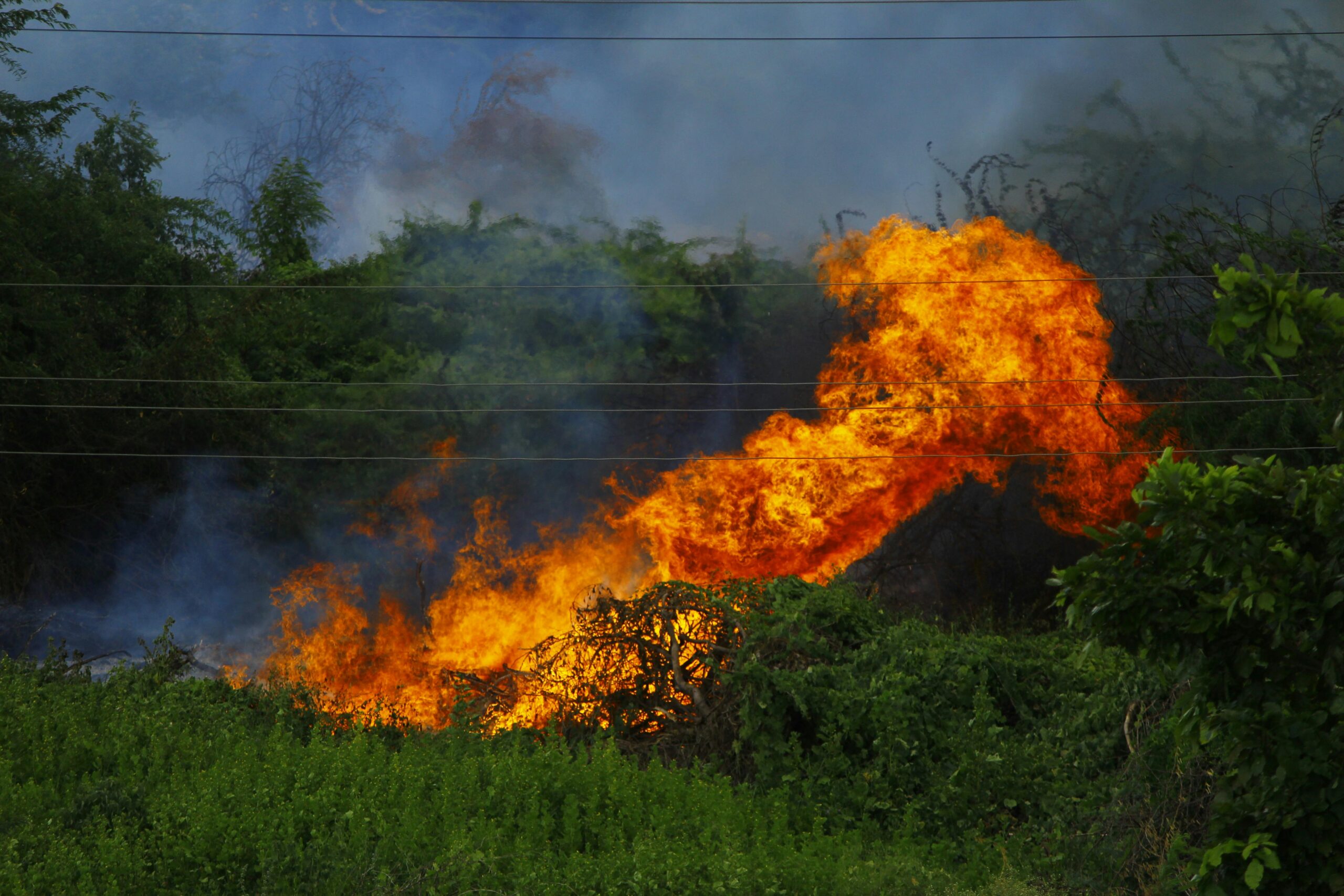Bushfires Perth: How To Stay Safe During Intense Wildfire Threats is a crucial topic for anyone living in or around Western Australia’s vibrant capital. With bushfires Perth becoming increasingly frequent and severe due to climate change and dry conditions, understanding how to protect yourself and your loved ones has never been more important. But what exactly should you do when a wildfire threatens your area? Can you really prepare well enough to stay safe during these intense natural disasters? This article will guide you through essential safety tips, emergency preparedness steps, and the latest updates on bushfire alerts Perth, ensuring you’re ready for whatever comes your way.
In recent years, the wildfire threat Perth faces during the scorching summer months has escalated dramatically. Intense heatwaves and prolonged droughts have created the perfect storm for devastating bushfires in Perth and surrounding regions. Many residents remain unaware of the critical measures they must take to avoid danger when flames approach. Are you among them? From creating a defensible space around your home to having a well-planned evacuation route, there are simple yet powerful strategies that can make all the difference. Staying informed with the most up-to-date bushfire warnings Perth is also essential – don’t wait for the last minute to act!
Whether you are a long-time local or new to the area, this comprehensive guide on how to stay safe during bushfires Perth will equip you with expert advice and practical insights. Discover how community efforts, government resources, and personal preparedness combine to reduce risk in the face of wildfire emergencies. Stay ahead of the danger, protect your property, and keep your family safe by learning the critical steps you need to take today. Ready to become bushfire-savvy? Let’s dive in.
Top 7 Essential Bushfire Safety Tips for Perth Residents Facing Intense Wildfire Threats
The summer months in Perth have been increasingly marked by intense bushfire threats, leaving many residents anxious and unsure about how to keep themselves safe. Bushfires in Perth are not a new phenomenon, but with climate change making conditions drier and hotter, the risk and frequency of wildfires have definitely risen. If you live in or near Perth and are worried about bushfires, it’s important to be prepared and know what to do before, during, and after a fire. Here are the top 7 essential bushfire safety tips every Perth resident should know.
Why Bushfires in Perth Are So Dangerous
Perth and its surrounding regions have a Mediterranean climate, featuring hot, dry summers and wet winters. This climate creates ideal conditions for bushfires, especially when combined with strong winds and dry vegetation. Historically, Western Australia has seen devastating fires, such as the 2011 Margaret River bushfire that destroyed homes and vast tracts of forest. Unlike some other regions, Perth’s urban sprawl often meets bushland, increasing the fire risk to properties and lives.
Bushfires can spread rapidly, sometimes doubling in size every few minutes. The unpredictability makes it crucial for people to stay informed and ready to act immediately.
Top 7 Essential Bushfire Safety Tips for Perth Residents
Prepare an Emergency Plan
- Identify multiple evacuation routes from your home.
- Decide where your family will meet if separated.
- Prepare a “go bag” with essentials like water, food, medications, and important documents.
- Practice your plan regularly, so everyone knows what to do.
Stay Informed About Bushfire Alerts
- Sign up for local emergency alerts via SMS or apps.
- Monitor the Bureau of Meteorology for fire weather warnings.
- Listen to local radio or TV for updates.
- Don’t rely solely on social media, as misinformation can spread quickly.
Create a Defensible Space Around Your Property
- Clear dry leaves, branches, and other flammable materials within 20 metres of your home.
- Trim trees and bushes to prevent fire from reaching the roof.
- Keep lawns short and watered, especially during fire season.
- Store firewood and fuel tanks well away from the house.
Use Fire-Resistant Materials and Design
- Consider installing metal shutters or fire-resistant screens on windows.
- Use non-flammable roofing and gutter materials.
- Seal gaps around doors and windows to prevent embers from entering.
- Regularly clean gutters and roofs from debris.
Know When to Leave or Stay
- Authorities recommend leaving early if a bushfire is approaching and conditions are dangerous.
- Staying to defend your property is only advised if you are prepared and have the right equipment.
- If you decide to stay, have hoses, buckets, and garden sprinklers ready.
- Always have a clear exit route and don’t wait till the last minute to evacuate.
Protect Your Pets and Livestock
- Prepare a safe area for pets with water and shelter.
- Keep pet carriers and leashes handy.
- Move livestock to safer pastures or shelters well before the fire season peaks.
- Have a plan for transportation if evacuation becomes necessary.
After the Fire: Stay Cautious
- Avoid returning home until authorities say it’s safe.
- Watch out for fallen power lines, hot spots, and debris.
- Check your property for damage and report any hazards.
- Seek support if you or your family feel stressed or traumatised by the event.
Comparison: Bushfire Safety in Perth vs Other Australian Cities
| Aspect | Perth | Sydney | Melbourne |
|---|---|---|---|
| Climate | Mediterranean, dry summers | Humid subtropical | Oceanic, cooler summers |
| Vegetation | Eucalypt forests, scrublands | Mixed forests, grasslands | Mixed forests, grasslands |
| Fire season | December to March | October to December | January to March |
| Urban-bush interface | High | High | Moderate |
| Common fire causes | Lightning, human activity | Lightning, arson, accidents | Lightning, human activity |
| Community preparedness | Growing awareness | Established systems | Established systems |
Perth residents must understand that while some fire safety principles are universal, local conditions demand specific preparations. The unique climate and vegetation around Perth mean fires can behave differently compared to the east coast.
Practical Examples of Bushfire Preparedness in Perth
One Perth family shared how they prepared for the 2023 fire season. They cleared their backyard of dry leaves, installed a sprinkler system, and created a dedicated fire safety kit. When a nearby fire broke out, they received
How to Prepare Your Home in Perth for Bushfires: Proven Strategies to Protect Your Property
Perth, known for its stunning landscapes and warm climate, unfortunately, also faces the threat of bushfires every year. The bushfire season in Western Australia can be intense and unpredictable, leaving many homeowners worried about how to protect their property and loved ones. Knowing how to prepare your home in Perth for bushfires isn’t just smart, it could be lifesaving. This article will explore proven strategies to help you get ready for the wildfire threats, explain how to stay safe during intense bushfire situations, and share insights about bushfires in Perth that matters for every resident.
Why Bushfires in Perth are a Serious Concern
Perth’s surrounding natural vegetation and dry summers create a perfect environment for bushfires to ignite and spread quickly. Historically, the region has seen severe bushfires, like the 2011 Perth Hills fires, which destroyed homes and forced evacuations. These events remind us that bushfires are not just a rural problem but can affect suburban areas close to bushland.
Some causes of bushfires include:
- Lightning strikes during storms
- Unattended campfires or discarded cigarettes
- Sparks from machinery or vehicles
- Arson or accidental human activity
With climate change, the fire seasons have become longer and more severe, increasing the risk every year. This makes it essential for homeowners to understand how to prepare their properties adequately.
How to Prepare Your Home in Perth for Bushfires: Proven Strategies
Preparation means reducing the risk of fire affecting your home and improving the chances that your property can survive if a fire comes near. Here are some practical steps you can take:
Create a Defensible Space
- Remove dry leaves, twigs, and other flammable materials from around your home.
- Keep grass and shrubs trimmed low.
- Cut back tree branches that overhang your roof or are close to windows.
- Maintain a clear zone of at least 20 metres around your house free of flammable vegetation.
Use Fire-Resistant Building Materials
- If building or renovating, choose non-combustible materials for roofing and exterior walls.
- Install double-glazed windows or use metal shutters to protect glass from breaking in heat.
- Seal gaps around doors, vents, and windows to prevent embers entering your home.
Prepare Emergency Equipment and Water Supply
- Have a reliable water source like garden hoses connected to taps, buckets, and sprinklers.
- Consider installing a water tank dedicated for firefighting.
- Keep fire extinguishers and protective clothing ready.
Develop a Bushfire Survival Plan
- Know your local bushfire risk level and stay informed through emergency services.
- Plan multiple evacuation routes.
- Decide in advance whether you will stay and defend or leave early.
- Prepare an emergency kit including important documents, first aid, food, water, and clothing.
Bushfires Perth: How To Stay Safe During Intense Wildfire Threats
When a bushfire is threatening, staying calm and following official advice is crucial. Many people underestimate how quickly conditions can change.
Some safety tips include:
- Always monitor local news and emergency alerts for fire warnings.
- If ordered to evacuate, don’t delay. Leaving early reduces stress and risk.
- If you stay, ensure all doors and windows are closed and covered.
- Turn off gas and electricity to reduce ignition sources.
- Keep your emergency kit close and wear protective clothing – long sleeves, pants, sturdy shoes, and a mask if possible.
- Avoid breathing in smoke and stay hydrated.
Comparing Bushfire Risks in Perth with Other Australian Cities
| City | Typical Bushfire Season | Average Homes Affected (Recent Major Fires) | Common Fire Causes |
|---|---|---|---|
| Perth | November to March | Hundreds (e.g., 2011 Perth Hills fire) | Vegetation, human activity |
| Sydney | October to February | Thousands (e.g., 2019-2020 fires) | Dry conditions, lightning |
| Melbourne | December to February | Several hundred (e.g., 2009 Black Saturday) | Vegetation, heatwaves |
While Perth may not face as many catastrophic fires as some eastern states, the risk remains serious due to the dry climate and dense bushland around the city suburbs.
Practical Examples of Bushfire Preparation in Perth
- Homeowner A cleared a 30-metre perimeter of all dry bushes and installed metal shutters on all windows. During a recent fire threat, their home remained undamaged.
- Homeowner B did not maintain their garden, and embers ignited dry leaves on their roof, resulting in significant damage.
- Community groups in Perth often organise bushfire awareness workshops, encouraging residents to prepare their homes and share survival plans.
Checklist to Prepare Your Home for Bushfires in Perth
What to Do During a Bushfire Emergency in Perth: A Step-by-Step Safety Guide
Bushfires have been a persistent and often devastating threat in Australia, particularly in places like Perth where dry conditions and hot weather create the perfect environment for wildfires to ignite and spread rapidly. Knowing what to do during a bushfire emergency is crucial, not just for residents but also visitors who might find themselves caught in the middle of an intense wildfire. This guide will walk you through the essential steps to take during a bushfire emergency in Perth, and offer some practical advice on how to stay safe when the threat is at its highest.
Understanding Bushfires in Perth
Perth, situated in Western Australia, experiences bushfire season mainly during the hotter months from November to April. The city’s unique Mediterranean climate, combined with vast bushland surrounding many suburbs, means bushfires can start quickly and threaten homes and lives. Historically, bushfires have caused major damages in Perth and its outskirts. One of the most severe bushfire events was the 2011 Margaret River bushfire, which destroyed thousands of hectares of forest and several homes.
Bushfires start from various causes including lightning strikes, human activity, and sometimes electrical faults. Once a fire starts it can spread with frightening speed, especially when accompanied by strong winds and dry vegetation. It’s important to understand that bushfires don’t just affect rural areas; suburban areas near bushland often face significant risk.
What to Do When a Bushfire Emergency Happens
When a bushfire emergency declared in Perth, every second counts. Here’s a step-by-step guide to keep you and your family safe:
Stay Informed
- Listen to ABC radio or follow local news channels for real-time updates.
- Use emergency apps like the ‘Fires Near Me WA’ which gives live bushfire alerts.
- Check Bureau of Meteorology warnings for weather changes that could affect fire behaviour.
Prepare to Evacuate or Shelter
- Have your emergency kit ready with essentials: water, food, first aid, medications, important documents, and clothes.
- Know your evacuation routes and have a plan where to go.
- If you decide to stay, find a safe shelter spot away from the fire front, preferably a building with fire-resistant materials.
Protect Your Home (If Time Allows)
- Clear gutters of leaves and debris that can catch fire.
- Move flammable items like garden furniture, woodpiles, or gas bottles away from the house.
- Close all windows, doors, and vents to prevent embers entering your home.
Follow Official Instructions
- If ordered to evacuate, do so immediately. Don’t wait until the last minute.
- If told to stay and defend your property, make sure you have the capability and knowledge to do so safely.
- Avoid driving through smoke or flames; visibility might be poor and conditions unpredictable.
Bushfires Perth: How To Stay Safe During Intense Wildfire Threats
Being proactive can save lives and reduce damage during wildfire threats. Here’s practical advice on how to prepare and act if you live in or near Perth bushfire-prone areas:
- Create a Bushfire Survival Plan: Write down what to do before, during, and after a fire. Include emergency contacts, evacuation routes, and safe meeting points.
- Regularly Maintain Your Property: Trim trees and bushes, mow grass, and remove dead vegetation regularly. This reduce fuel for fires.
- Stay Alert During High Fire Danger Days: The Fire Danger Index (FDI) is a important tool; days rated as ‘Very High’, ‘Severe’, or ‘Catastrophic’ means you must be extra vigilant.
- Keep Vehicles Fueled and Ready: If evacuation is necessary, having your car ready means you can leave quickly without delay.
- Know Neighbours and Community Resources: Sometimes collective action helps during emergencies. Community centres often provide support and information during bushfires.
Comparing Bushfire Safety Measures: Perth vs Other Australian Cities
It’s interesting to compare how Perth’s bushfire preparedness stacks up against other Australian cities like Melbourne or Sydney, which also face wildfire risks but in different environments:
- Vegetation Types: Perth has significant areas of jarrah and marri forests which can burn intensely but sometimes slower than the dry eucalyptus forests near Sydney.
- Climate Differences: Sydney experiences bushfires in hotter, drier summer months, while Perth’s Mediterranean climate means long dry summers but mild winters.
- Emergency Services: Western Australia’s Department of Fire and Emergency Services (DFES) coordinates firefighting efforts in Perth, while NSW and Victoria have their own respective agencies. All share similar public alert systems but with local variations.
- Community Awareness: Cities with frequent bushfires like Melbourne often have more established evacuation drills and public education campaigns, but Perth
Understanding Perth’s Bushfire Risk Zones: How to Stay Informed and Ready Year-Round
Understanding Perth’s Bushfire Risk Zones: How to Stay Informed and Ready Year-Round
Bushfires in Perth have become a growing concern for residents and authorities alike. With hotter summers and drier conditions, the risk of wildfires increasing every year. Yet many people don’t fully understand what bushfire risk zones are, how they affect their safety, and what they should do to stay prepared. This article will dive into the essentials you need to know about bushfires in Perth, helping you stay informed and ready no matter the season.
What Are Bushfire Risk Zones In Perth?
Bushfire risk zones are specific areas classified based on the likelihood of wildfires occurring and their potential impact. In Perth, these zones are determined by factors like vegetation type, weather patterns, and topography. The government, through its emergency services, maps these zones to help plan resources and inform the public.
There are typically three main zones:
- High Risk Zone: Areas with dense bushland or grasslands, prone to frequent fires.
- Moderate Risk Zone: Transitional areas with some vegetation but also urban development.
- Low Risk Zone: Mostly urban or cleared areas with minimal vegetation.
Knowing which zone you live or work in is important because it influences what precautions you should take and how quickly you need to respond to fire warnings.
Historical Context: Bushfires In Perth
Perth has experienced several significant bushfire events, some causing devastating damage and loss. One of the most severe was the 2011 Roleystone-Kelmscott bushfire, which destroyed over 70 homes and forced thousands to evacuate. This event highlighted how unpredictable and dangerous bushfires can be in the Perth metropolitan area, not just in rural regions.
Another notable example is the 2015 Waroona fire, which impacted areas south of Perth, burning over 70,000 hectares and destroying dozens of houses. These incidents have led to improvements in fire management strategies and community awareness campaigns.
How To Stay Informed About Bushfire Risks
Staying updated on bushfire threats is crucial for safety. Here are some practical ways to keep informed:
- Check Official Websites: The Department of Fire and Emergency Services (DFES) provides real-time updates and maps.
- Use Mobile Apps: Apps like “Fires Near Me” offer alerts and fire location information.
- Local News: Follow Perth news outlets on radio, TV, or online for immediate updates.
- Social Media: Emergency services often post on Twitter and Facebook during emergencies.
- Community Networks: Neighbourhood groups or local councils might share warnings and safety tips.
Bushfires Perth: How To Stay Safe During Intense Wildfire Threats
When a bushfire threat is declared, rapid action can save lives and property. Here’s some advice to keep safe:
- Prepare Your Property: Clear leaves, debris, and flammable materials around your home. Maintain a 20-metre defendable space if possible.
- Have An Emergency Kit: Include essentials like water, food, medications, important documents, and a battery-powered radio.
- Know Your Evacuation Routes: Plan multiple ways out of your area in case some roads are blocked.
- Follow Official Instructions: If authorities advise to evacuate, do so immediately. Delaying can be fatal.
- Stay Indoors If Not Evacuating: Close all doors and windows, turn off ventilation systems, and keep tuned for updates.
Comparison: Perth’s Bushfire Risk Vs Other Australian Cities
While Perth faces significant bushfire threats, it’s instructive to compare its risks with other cities:
| City | Average Annual Bushfire Incidents | Vegetation Type | Typical Fire Season |
|---|---|---|---|
| Perth | Moderate | Mixed bushland, scrub | December to March |
| Melbourne | High | Eucalyptus forests | January to February |
| Sydney | High | Dense bushland | November to February |
| Adelaide | Moderate to High | Heathlands and dry scrub | December to March |
This shows Perth’s risk is serious but sometimes less intense than in the southeast, where eucalyptus forests fuel more severe fires. However, climate change could alter these patterns in coming years.
Practical Examples Of Preparing For Bushfire Season In Perth
- Installing fire-resistant shutters or screens on windows.
- Creating a firebreak by mowing grass and removing low branches.
- Regularly checking and maintaining firefighting equipment like hoses and pumps.
- Participating in local bushfire preparedness workshops.
- Keeping your vehicle fuelled and ready for rapid evacuation.
Summary Of Key Bushfire Safety Tips
- Always monitor official warnings and alerts.
- Prepare your home and property before the fire season.
- Have an evacuation plan and emergency supplies ready.
- Stay calm and act quickly if a fire threatens your area.
The Ultimate Checklist for Perth Families: Staying Safe and Calm Amidst Severe Bushfire Warnings
The Ultimate Checklist for Perth Families: Staying Safe and Calm Amidst Severe Bushfire Warnings
When bushfires strike Perth, the chaos and danger can be overwhelming for families. It’s not just about the flames, but the smoke, the fear, and the uncertainty that follows. Perth has seen some intense wildfire threats over the years, making it vital for families to be prepared and stay calm during such events. This guide tries to help you navigate those anxious times with practical advice, historical context, and a clear checklist to keep you safe.
Bushfires Perth: Why They Are So Intense
Perth’s climate and landscape make it particularly vulnerable to bushfires. The hot, dry summers combined with strong winds create the perfect storm for wildfires to spread quickly. Historically, Western Australia has experienced some devastating bushfires. For instance, the 2011 Roleystone-Kelmscott bushfire destroyed hundreds of homes and forced thousands to evacuate. These events remind us how unpredictable and dangerous bushfires can be.
Comparing Perth to other Australian cities, you might notice that while Sydney or Melbourne also faces bushfire threats, the natural vegetation around Perth—such as jarrah and marri forests—burns differently. These trees sometimes produce more intense fires, which can be harder to control and more destructive.
What Families Must Know Before Bushfire Season
Preparation is the foundation of safety. Many families only start thinking about bushfires when warnings are issued, but that’s often too late. Ideally, you should start planning months before the bushfire season begins, which usually peaks between December and March.
Here’s a simple list of what families should have ready:
- Emergency Kit: water, non-perishable food, first aid kit, flashlight, batteries, important documents.
- Communication Plan: decide on meeting points and how you will contact each other if separated.
- Evacuation Routes: know at least two ways out of your neighbourhood.
- Home Preparation: clear gutters, remove dry leaves, and create a firebreak if possible.
- Stay Informed: register for local alerts from the Department of Fire and Emergency Services (DFES).
How To Stay Safe During Intense Wildfire Threats in Perth
When a severe bushfire warning is issued, the situation changes rapidly. It’s crucial to follow local advice and not underestimate the fire’s speed. Here’s how families can act wisely during such dangerous times:
- Always listen to official updates on radio or smartphone apps.
- If told to evacuate, leave as early as possible to avoid traffic jams.
- Keep pets in a safe, accessible place. Animals can get scared and run away.
- Close all windows and doors to prevent smoke and embers from entering the house.
- Wear protective clothing if you need to be outside—long sleeves, sturdy shoes, and a hat.
- Avoid using sprinklers or hosing the house; it can waste water and may not help during a firestorm.
Practical Example: The 2023 Perth Bushfire Incident
In early 2023, a sudden bushfire near the outer suburbs of Perth quickly escalated due to dry conditions and strong winds. Families who had prepared evacuation kits and clear plans managed to leave safely with minimal confusion. However, those who waited until the last minute faced blocked roads and increased stress.
One family shared how their communication plan helped them regroup at a pre-arranged safe spot, even though mobile coverage was patchy. They also praised their emergency kit, which kept them comfortable while waiting for official shelter to open.
Checklist for Perth Families: Be Ready Before and During Bushfires
| Item | Purpose/Notes |
|---|---|
| Water (4 litres per person) | Stay hydrated; essential for survival. |
| Non-perishable food | Enough for 3 days; canned or dried items. |
| First aid kit | Include burn cream, bandages, painkillers. |
| Flashlight and batteries | Power outages common during fires. |
| Important documents | Passports, IDs, insurance papers in waterproof bag. |
| Face masks | To protect from smoke inhalation. |
| Protective clothing | Long-sleeved shirts, pants, sturdy shoes. |
| Pet supplies | Food, water, leashes, carriers. |
| Mobile phone chargers | Preferably power banks. |
| Local emergency contacts | Written down in case phones die. |
| Evacuation routes map | Printed copies and digital versions. |
| Home fireproofing tools | Hoses, rake, gloves for clearing debris. |
Why Staying Calm Matters
When bushfires approach, fear can cause panic and poor decisions. It’s natural to feel scared, but staying calm helps you think clearly and act quickly. Practising your emergency plan with your family can reduce anxiety and make everyone familiar with what to do. Remember, fires move fast, but you can move faster with the right preparation.
Historical Lessons from Past Perth Bushfires
Looking back at past bushfires in Perth teaches valuable lessons
Conclusion
In conclusion, bushfires remain a significant threat to Perth and its surrounding regions, particularly during the hot, dry summer months. The combination of natural factors such as drought, high temperatures, and strong winds, alongside human activities, contributes to the frequency and intensity of these fires. It is crucial for residents to stay informed through local fire warnings, prepare their properties by clearing vegetation, and have an emergency plan in place. Moreover, community efforts and government initiatives focused on fire prevention and rapid response play a vital role in minimising damage and protecting lives. As climate change continues to impact weather patterns, the risk of bushfires is likely to increase, making awareness and preparedness more important than ever. By working together and taking proactive measures, Perth’s community can better safeguard their homes and environment from the devastating effects of bushfires. Stay vigilant and act early to ensure safety for all.








